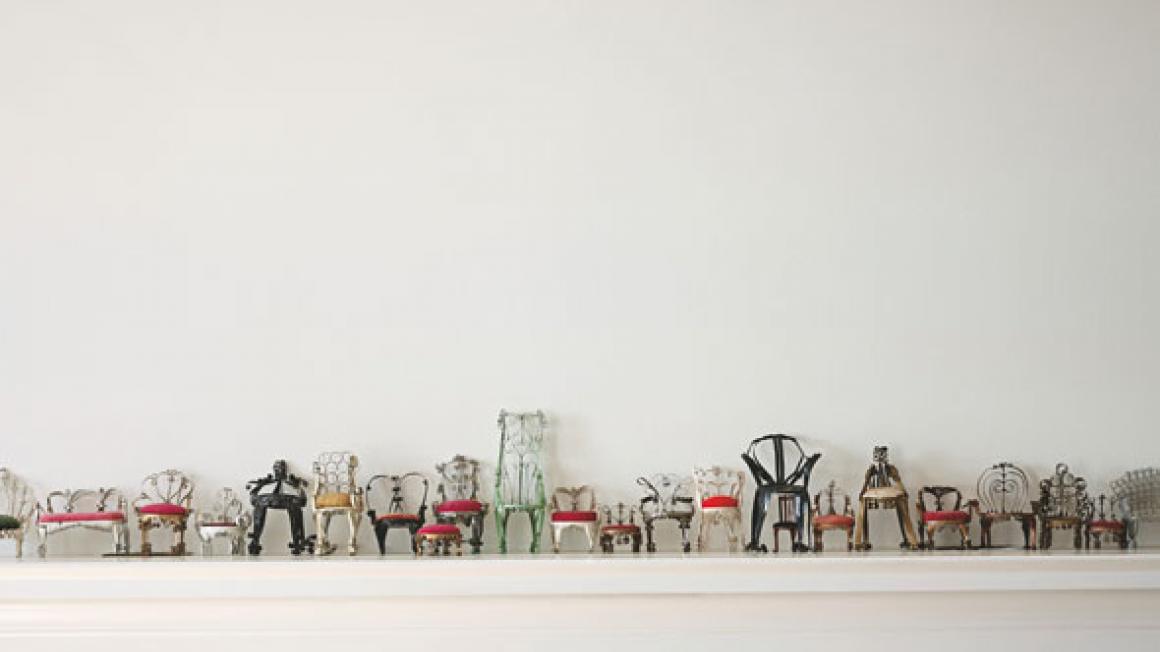PERSONAL TREASURES
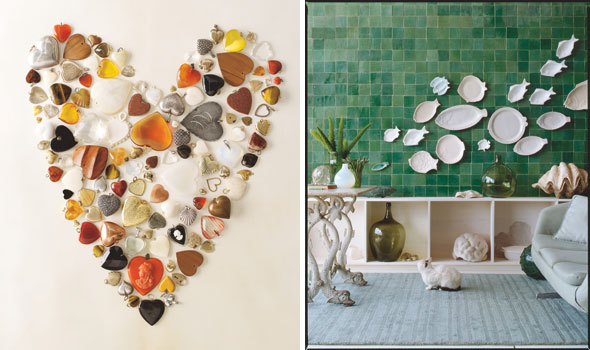 Left: An array of heart-shaped charms in early plastics, glass, gold and silver. Right: A school of fish swims across a serpentine-tiled wall in a living area. Sand-toned fabrics and a giant clamshell augment the beachfront ambience
Left: An array of heart-shaped charms in early plastics, glass, gold and silver. Right: A school of fish swims across a serpentine-tiled wall in a living area. Sand-toned fabrics and a giant clamshell augment the beachfront ambienceMany keep their prized possessions stashed in drawers or closets or otherwise tucked away, troves of mod vintage napkins or chenille bedspreads are kept neatly folded in the linen cabinet, and mid-century ceramic vessels are grouped unceremoniously on a side table. The good silverware and place settings are only brought out for special occasions. Aesthetes attuned to subtleties of patina and finish aren’t always able to translate that sensibility to the larger scale of a room’s decor. And the most serious, curatorially minded collectors don’t generally dwell with their treasures; they safeguard them in archival storage or safe-deposit boxes. That these wonderful collections, which bring so much delight to their owners, were not displayed to fullest effect felt like such a missed opportunity.
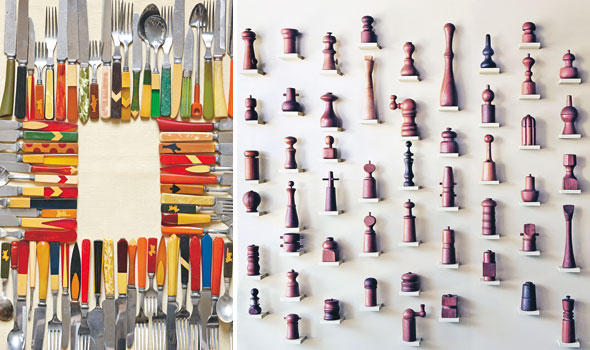 Left: Bakelite became a collecting obsession in the 1980s. Bakelitehandled flatware came in solid hues or inlaid with patterns in a contrasting colour or colours. Right: This author/collector literally wrote the book on modernist pepper mills and this wall in his home is a shrine to them. Each perches on its own shelf
Left: Bakelite became a collecting obsession in the 1980s. Bakelitehandled flatware came in solid hues or inlaid with patterns in a contrasting colour or colours. Right: This author/collector literally wrote the book on modernist pepper mills and this wall in his home is a shrine to them. Each perches on its own shelfOver the years, we’ve grown increasingly impassioned to help our fellow enthusiasts live harmoniously with their collections. It’s been our personal and professional mission to get treasures out of boxes and into their owners’ daily surroundings.
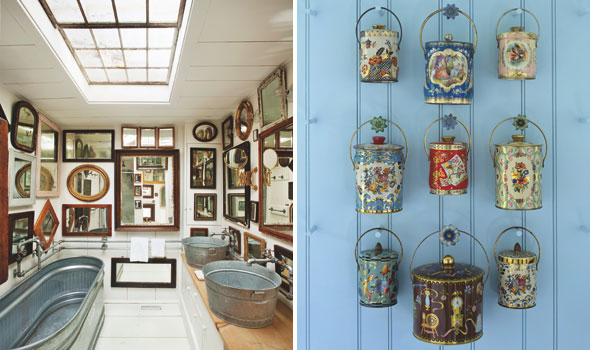 Left: An architect outfitted the bathroom of his 1800s Sag Harbor, New York, cottage in a salon-like installation of framed mirrors. Right: Vintage tea canisters still have abundant graphic appeal – perfect for spicing up an overlooked nook
Left: An architect outfitted the bathroom of his 1800s Sag Harbor, New York, cottage in a salon-like installation of framed mirrors. Right: Vintage tea canisters still have abundant graphic appeal – perfect for spicing up an overlooked nookWe yearned for a forum to relate these design methods to a wider audience. To share inspiring examples of how collections can infuse and inform the surrounding decor – and how that decor can in turn act as a beautiful foil for those objects. And thus our new book Collected was born.
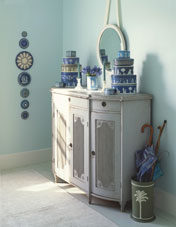 Huntley & Palmers made tins that mimicked blue Wedgwood; set in tiers on a console, they are witty stand-ins for the real thingCollected is not about celebrating who owns the biggest, rarest or most expensive objects. Collecting is not inherently an elite pursuit. Rather, it is universal, accessible, and all-inclusive. Yes, there are those who chase obscure museum-calibre finds, but there’s equal nobility and novelty in a collection of bottle caps salvaged from the recycling bin. You don’t have to be a person of extraordinary means to be considered a collector. You just need to have a hunger for the pursuit, a thrill of the chase, and an openness to objects around you – and to welcoming joy into your life.
Huntley & Palmers made tins that mimicked blue Wedgwood; set in tiers on a console, they are witty stand-ins for the real thingCollected is not about celebrating who owns the biggest, rarest or most expensive objects. Collecting is not inherently an elite pursuit. Rather, it is universal, accessible, and all-inclusive. Yes, there are those who chase obscure museum-calibre finds, but there’s equal nobility and novelty in a collection of bottle caps salvaged from the recycling bin. You don’t have to be a person of extraordinary means to be considered a collector. You just need to have a hunger for the pursuit, a thrill of the chase, and an openness to objects around you – and to welcoming joy into your life.Collected, by Fritz Karch and Rebecca Robertson, with photography by Dana Gallagher, is published by Abrams, £25.


